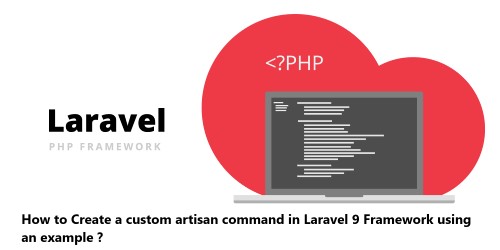How to create a one-to-one relationship in Laravel 9 ?
LaravelOne to one relationships in Laravel are a great way to connect two different models and define relationships between them. For example, a User model can have a single Address model associated with it. This means that for each user, there is one address.
Here at Fixwebnode, we'll explore how to set up a one-to-one relationship in Laravel 9.
We'll create two models and then create a one-to-one relationship between them. We'll also look at how to access the data from each model and how to update the relationship.
Table of contents [Show]
1. Create the Models
To begin, we need to create the models that we'll be using for our one-to-one relationship. We'll create a Customer and an Address model. We'll use the artisan command to generate the models:
$ php artisan make:model Customer
$ php artisan make:model Address
Once the models have been created, we need to define the relationships between them.
We'll add the following to the Customer model:
php
public function address()
{
return $this->hasOne(Address::class);
}
And the following to the Address model:
- php
- public function customer()
- {
- return $this->belongsTo(Customer::class);
- }
These methods will define the one-to-one relationship between the Customer and Address models.
2. Create the Migration
Next, we need to create the migration for the relationship. The migration will create the columns in the database that will define the relationship between the Customer and Address models.
We'll use the artisan command to generate the migration:
$ php artisan make:migration create_customer_address_table --create=customer_address
This command will create a migration file that will create the customer_address table in the database.
We'll add the following columns to the migration file:
php
Schema::create('customer_address', function (Blueprint $table) {
$table->bigIncrements('id');
$table->unsignedBigInteger('customer_id');
$table->unsignedBigInteger('address_id');
$table->timestamps();
$table->foreign('customer_id')->references('id')->on('customers');
$table->foreign('address_id')->references('id')->on('addresses');
});
This will create the columns in the database that will define the relationship between the Customer and Address models.
3. Accessing the Data
Now that the relationship has been defined, we can access the data from each model. We can access the Customer's Address using the address() method we defined earlier:
$customer->address
We can also access the Customer from the Address model using the customer() method:
$address->customer
4. Updating the Relationship
Finally, we'll look at how to update the relationship between the Customer and Address models. We can link the two models together by creating a new record in the customer_address table.
We'll use the create() method to create a new record in the database:
php
$customer->address()->create([
'address_id' => $address->id
]);
This will create a new record in the database with the customer_id and address_id fields set to the appropriate values.
How to work with one-to-one relationships in Laravel 9 ?
A one-to-one relationships can help to easily link two related models.
1. Defining the Relationship
The first step in working with one-to-one relationships is to define the relationship between the models. In Laravel 9, this is done using the hasOne() method.
For example, to create a one-to-one relationship between a User and an Address model, you could use the following code:
User::hasOne('App\Address');
Once the relationship has been defined, you can retrieve the related models using the with() method. This method will return an instance of the related model.
For example, to get the related Address model for a particular User instance, you could use the following code:
$address = $user->with('address')->first();
You can also use the hasOne() method to create a new related model. For example, to create a new Address model associated with a particular User instance, you could use the following code:
$user->address()->create($data);
Finally, you can use the hasOne() method to update an existing related model.
For example, to update an existing Address model associated with a particular User instance, you could use the following code:
$user->address()->update($data);
[Need help in fixing Laravel Applicatrion issues ? We can help you. ]









